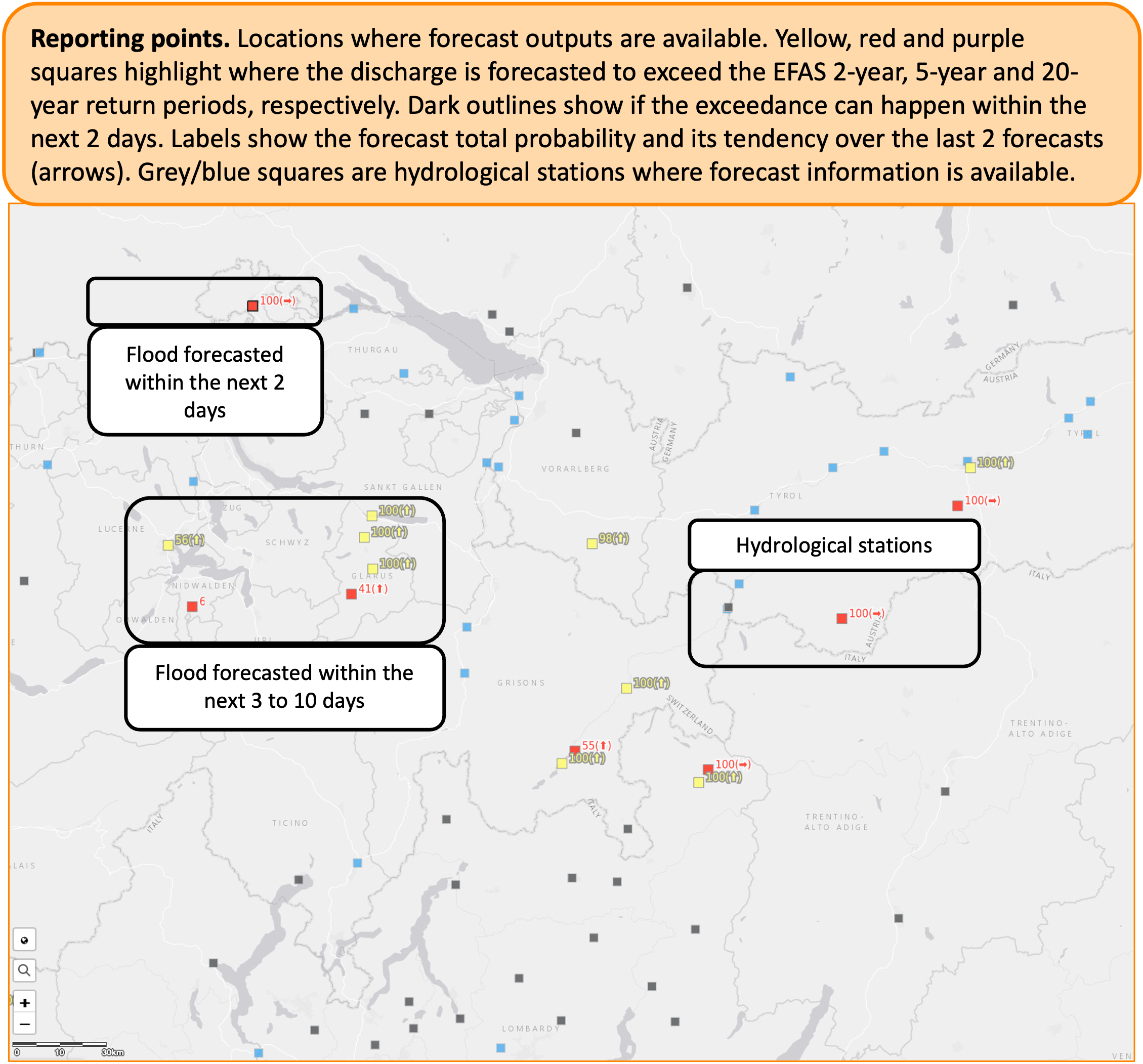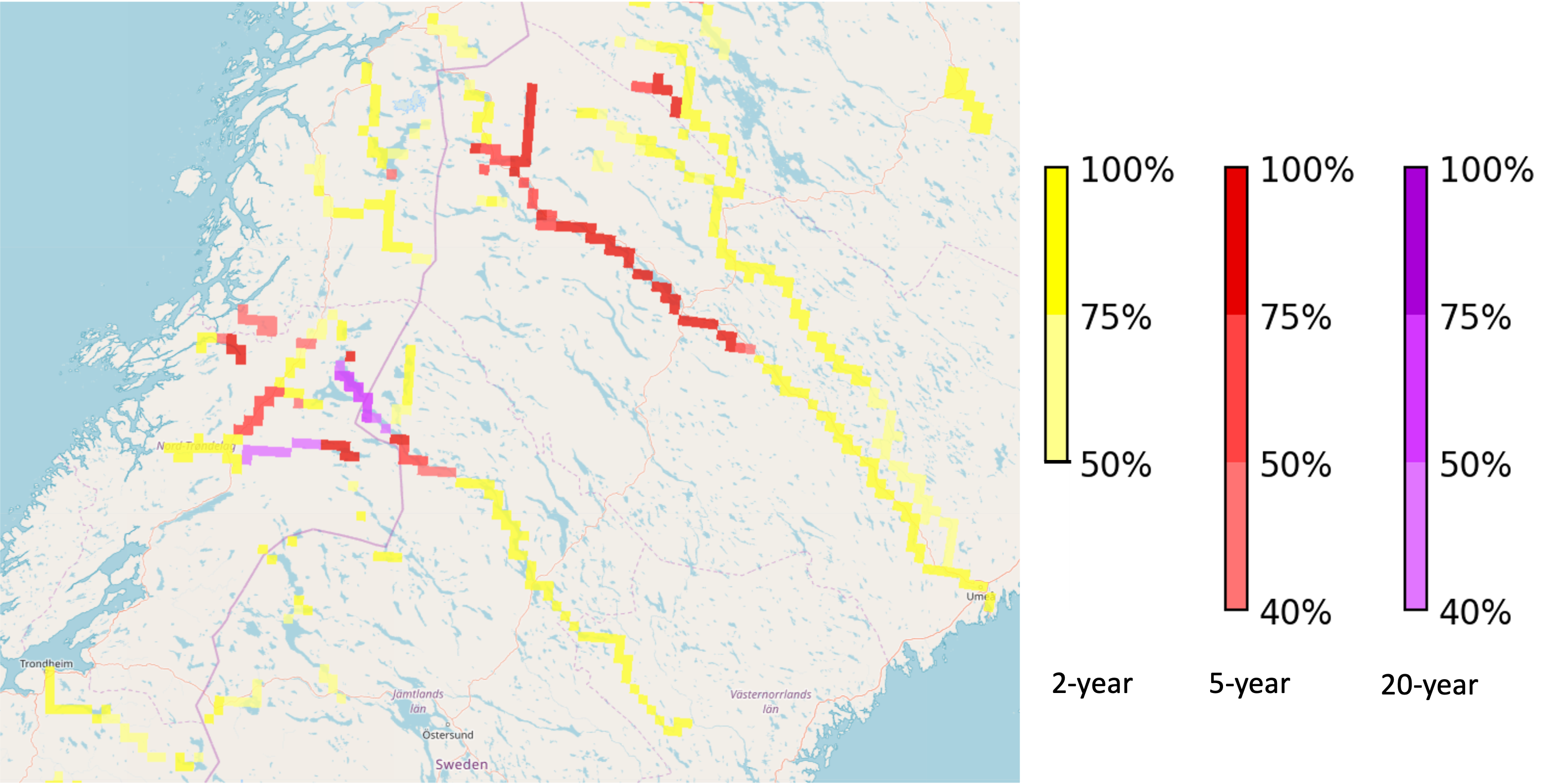The EFAS medium-range flood forecasts provide an overview of flood probability over the coming 10 days. They are created by comparing the EFAS forecast simulations with EFAS flood threshold levels. These flood threshold levels are calculated for every grid cell, based on a discharge time series simulated by the operational OS LISFLOOD hydrological model forced using observed meteorological data. EFAS medium-range flood thresholds are available for download from this page: EFAS Auxiliary Data
EFAS medium-range flood forecast products are displayed as colour-coded overview maps and time-series information at reporting points that can be viewed under the ‘Flood Summary’ layer of the map viewer. There are five main medium-range products:
- The ‘Reporting Points’ layer
- The 'EFAS 5-year exceedance probability' layers
- The 'EFAS Flood Probability' layer
- The ‘Threshold level exceedance’ layers
- The ‘Rapid Flood Mapping’ and ’Rapid Impact Assessment’ layers.
The EFAS medium-range forecasts provide the fundamental information upon which Informal and Formal Notifications are generated and then distributed to the EFAS partners and to the European Commission Emergency Response Coordination Centre:

N.B. EFAS medium-range flood forecasts produced at least 30 days earlier are freely available to view. Real-time EFAS medium-range flood forecasts are only available under certain conditions. Visit the EFAS data access pages to learn more on data restrictions.

Additional local information associated with each flood forecast layer (except for the ‘Flood Probability’ layers) is available from the Map Viewer as pop-up plots when clicking on the points. They display information such as Point Geographical Information, Forecast Summary and Flood Hydrographs. Read more about the pop-up plots and reporting point criteria in the CEMS Forecast Wiki under EFAS Reporting Points.
Furthermore, spatially distributed information along the river network can be visualized in the Map Viewer (see the image below). This feature highlights locations along the river network where EFAS forecasts a flood, presenting both the flood severity level and the probability of the impending flood. This layer combines the 2-year (yellow), 5-year (red), and 20-year (purple) total (combining all models) exceedance probabilities.


